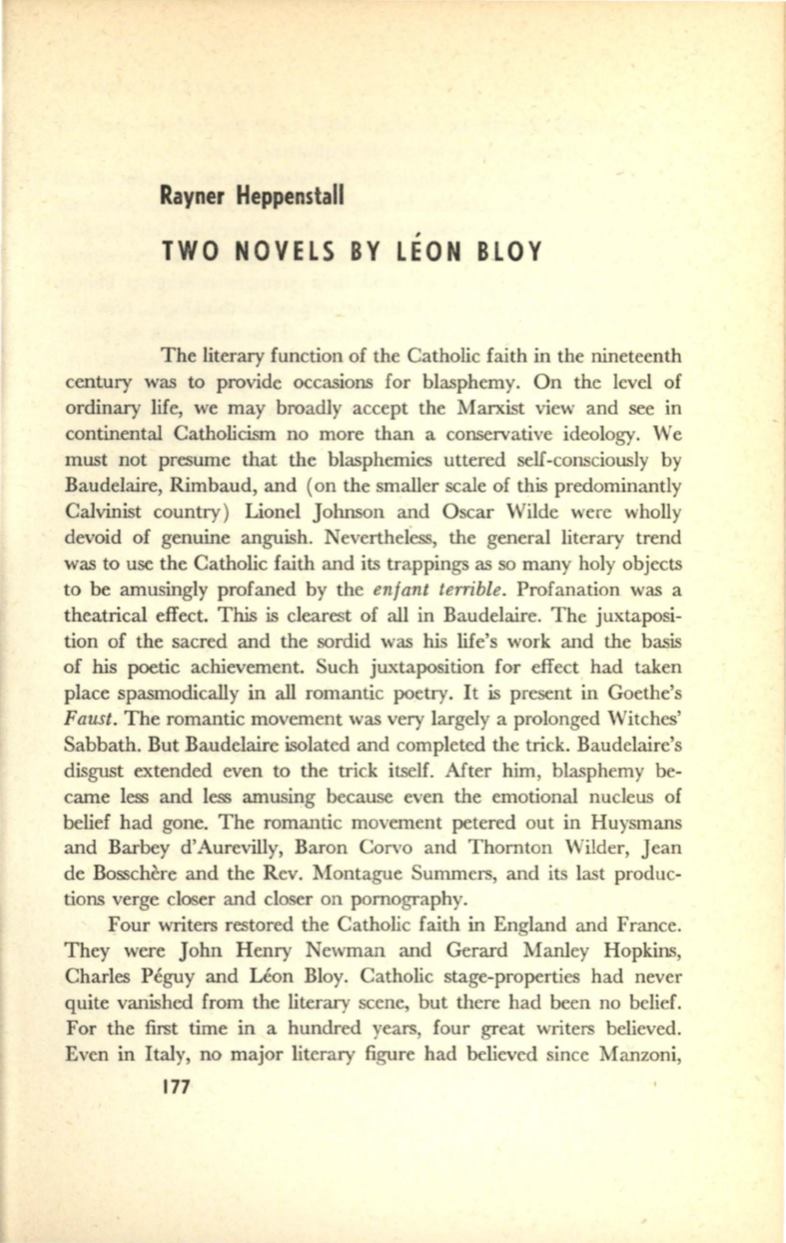
Rayner Heppenstall
,
TWO NOVELS BY LEON BLOY
The literary function of the Catholic faith in the nineteenth
century was to provide occasions for blasphemy. On the level of
ordinary life, we may broadly accept the Marxist view and see in
continental Catholicism no more than a conservative ideology. We
must not presume that the blasphemies uttered self-consciously by
Baudelaire, Rimbaud, and (on the smaller scale of this predominantly
Calvinist country) Lionel Johnson and Oscar Wilde were wholly
devoid of genuine anguish. Nevertheless, the general literary trend
was to use the Catholic faith and its trappings as so many holy objects
to be amusingly profaned by the
enfant terrible .
Profanation was a
theatrical effect. This is clearest of all in Baudelaire. The juxtaposi–
tion of the sacred and the sordid was his life's work and the basis
of his poetic achievement. Such juxtaposition for effect had taken
place spasmodically in all romantic poetry. It is present in Goethe's
Faust.
The romantic movement was very largely a prolonged Witches'
Sabbath. But Baudelaire isolated and completed the trick. Baudelaire's
disgust extended even to the trick itself. After him, blasphemy be–
came les<> and les<> amusing because even the emotional nucleus of
belief had gone. The romantic movement petered out in Huysmans
and Barbey d'Aurevilly, Baron Corvo and Thornton Wilder, Jean
de Bosschere and the Rev. Montague Summers, and its last produc–
tions verge closer and closer on pornography.
Four writers restored the Catholic faith in England and France.
They were J ohn Henry Newman and Gerard Manley Hopkins,
Charles Peguy and Leon Bloy. Catholic stage-properties had never
quite vanished from the literary scene, but there had been no belief.
For the first time in a hundred years, four great writers believed.
Even in Italy, no major literary figure had believed since Manzoni,
177


